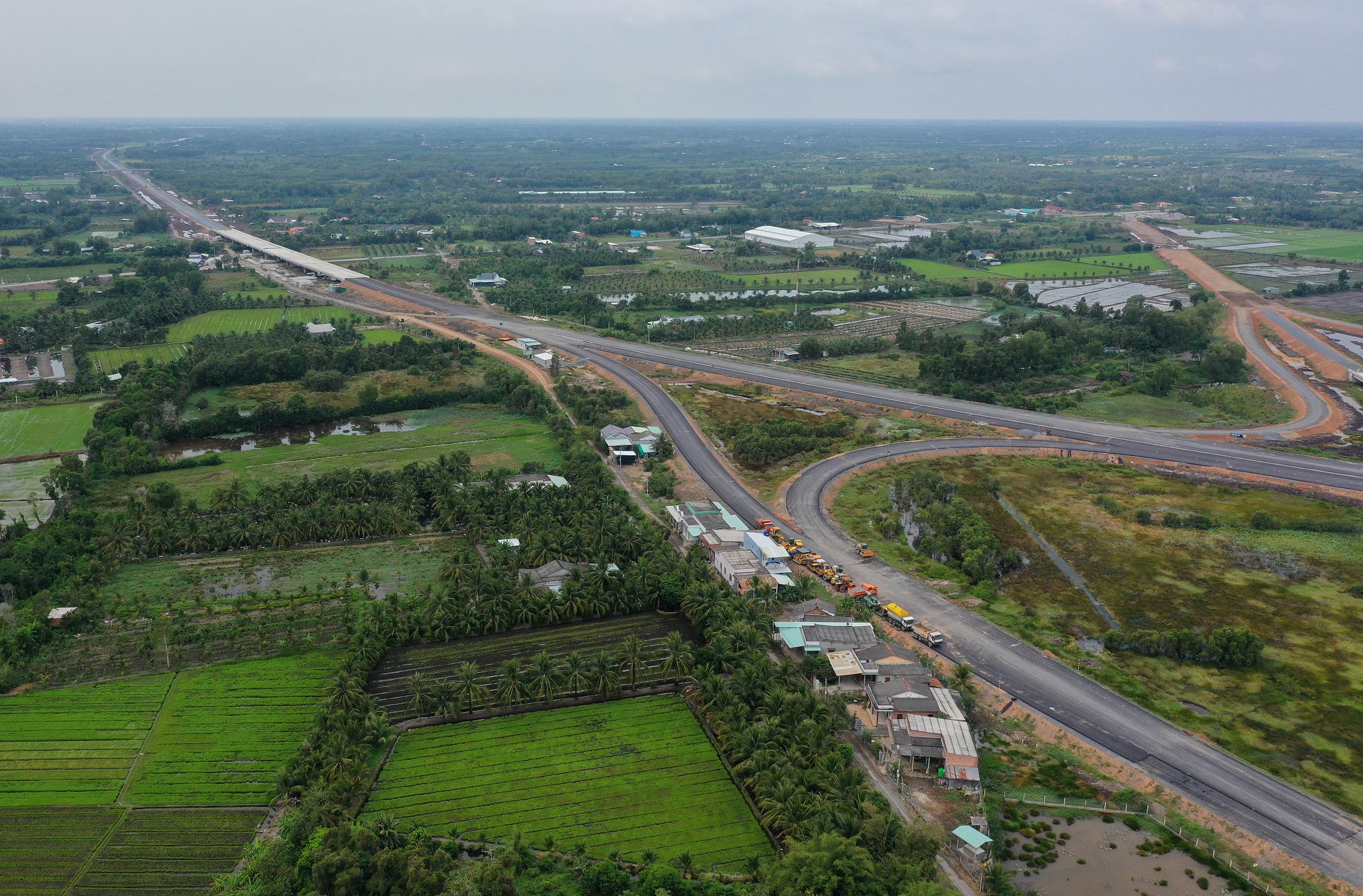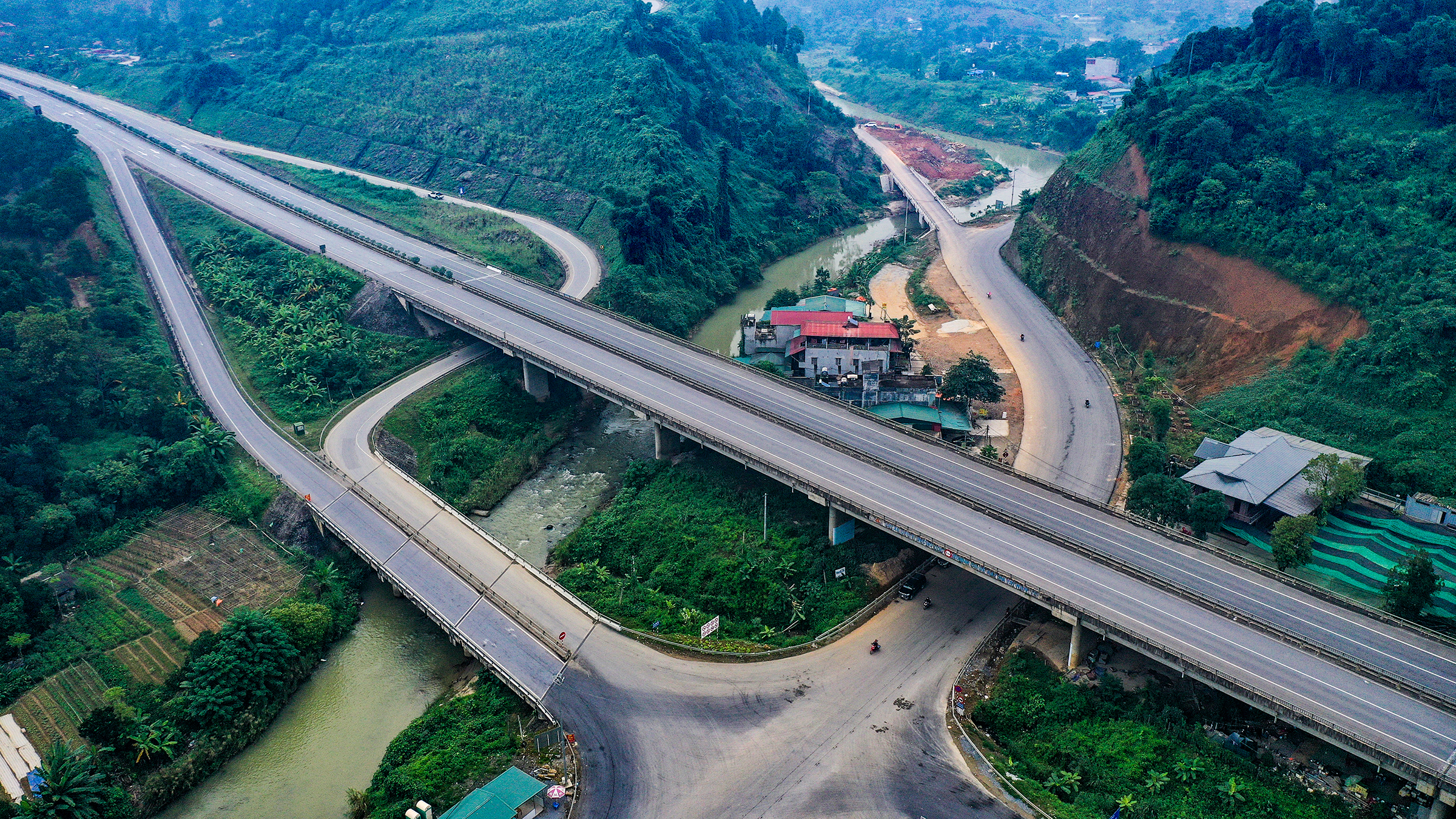Vietnam has taken 17 years to build 1,163 km (723 miles) of expressways, far short of the original goal to have 5,870 km built by 2020.
The construction of Vietnam’s expressways was planned in the 2000s in the context of the transnational highway system’s deterioration, the absence of an expressway system to connect commercial hub HCMC with agriculture and aquaculture hub Mekong Delta and neighboring localities.
In December 2004, work began on the country’s first expressway – the HCMC-Trung Luong Expressway. Stretching 61 km (38 miles), the much-anticipated VND9.88 trillion ($433.6 million) project and was funded with official development assistance (ODA) loans.
After six years, the project has been completed, shortening the traveling time from HCMC to Tien Giang Province from 90 to 30 minutes and helping ease traffic gridlocks along the National Highway 1A through Long An Province.
It is still the only expressway to connect HCMC and the Mekong Delta to date.
 |
|
Trung Luong – My Thuan Expressway, the extension of the HCMC – Trung Luong route, is under construction in Tien Giang Province, January 2021. Photo by VnExpress/Quynh Tran |
In 2006, the first expressway in the north, Cau Gie – Ninh Binh, was built with ODA loans to connect Hanoi and neighboring Ninh Binh Province, facilitating traffic flow at the southern gateway of the capital city.
Following up on the efficiency of the first two expressways and the urgency of investing in traffic infrastructure to serve socio-economic development, the government approved in 2008 a master plan on developing an expressway network until 2020 with vision until 2020. The plan comprised 22 expressway projects with a total length of 5,873 km.
In Jan. 2011, the 11th Party Congress passed a resolution which identified many limitations in the traffic infrastructure system that were a bottleneck of the nation’s development. The resolution said investing in the expressway system was an important driving force for the country’s progress. It set a target of having 2,000 km of expressways by 2020.
However, Vietnam has only finished building 1,163 km (723 miles) of expressways, with 89 km opened to traffic by 2010 and another 1,074 km by 2020.
Construction is underway on another 916 km, with the completion target set for 2023.
The Ministry of Transport estimates the speed of expressway construction in Vietnam at 74 km per year on average, just 1.5 percent that of China.
Explaining the slow progress, the ministry has cited the country’s limited financial resources, saying the state budget can only meet investment for renovating and upgrading the national highway system. This is why several expressways before 2010 were built with ODA loans, it has said.
Tran Chung, chairman of the Vietnam Association of Road Traffic Investors, also said that before 2015, the budget was limited and it was not easy to access ODA loans. The policy framework for attracting private investment into public projects had not been completed, creating difficulties in implementing expressway projects.
In the 2010-2015 period, the investment policy in the form of public-private partnership (PPP) had become more complete, allowing the government to start work on more expressways under the build-operate-transfer (BOT) format, including four in the north: Hoa Lac – Hoa Binh, Thai Nguyen – Cho Moi, Bac Giang – Lang Son; and the Trung Luong – My Thuan Expressway in the south, which is also an extension of the HCMC – Trung Luong route.
However, private investors found problems with the PPP mechanisms.
For example, the Hanoi – Hai Phong Expressway was finished in 2015, but a sum of more than VND4.7 trillion ($206 million) that the state had pledged for the project is yet to be paid to the investor, the Vietnam Infrastructure Development and Finance Investment Joint Stock Company.
In a similar situation, the investor of the Deo Ca Tunnel, which connects the central provinces of Khanh Hoa and Phu Yen, has not received the VND1.18 trillion pledged by the state since its completion in 2017.
 |
|
A part of the Noi Bai – Lao Cai Expressway that connects Hanoi with Lao Cai Province, home to tourist town Sa Pa, November 2021. Photo by VnExpress/Giang Huy |
In addition to the slow pace progress and difficulties in attracting private investment, Vietnam’s expressway network is not evenly distributed among regions. It remains limited in the Mekong Delta, the southeast (home to HCMC and industrial hubs of Binh Duong and Dong Nai), the Central Highlands and the northwest regions.
The Mekong Delta is home to 20 million people, or a fifth of Vietnam’s population, but there is only one expressway to connect it with the rest of the country.
This has made the transportation of goods more difficult, increased logistics costs and exerted greater pressure on National Highway 1A, resulting in chronic congestion on this route.
The four Central Highlands provinces of Dak Lak, Kon Tum, Gia Lai and Dak Nong do not have any expressways while national highways and provincial roads are not in good condition, making it difficult for local agricultural products to access seaports and reach domestic and international markets.
Many legislators have more than once raised the issue at parliament sessions and called on the transport sector to speed up construction of expressways in these areas.
- Reduce Hair Loss with PURA D’OR Gold Label Shampoo
- Castor Oil Has Made a “Huge” Difference With Hair and Brow Growth
- Excessive hair loss in men: Signs of illness that cannot be subjective
- Dịch Vụ SEO Website ở Los Angeles, CA: đưa trang web doanh nghiệp bạn lên top Google
- Nails Salon Sierra Madre
 VnExpress News The News Gateway of Vietnam
VnExpress News The News Gateway of Vietnam





